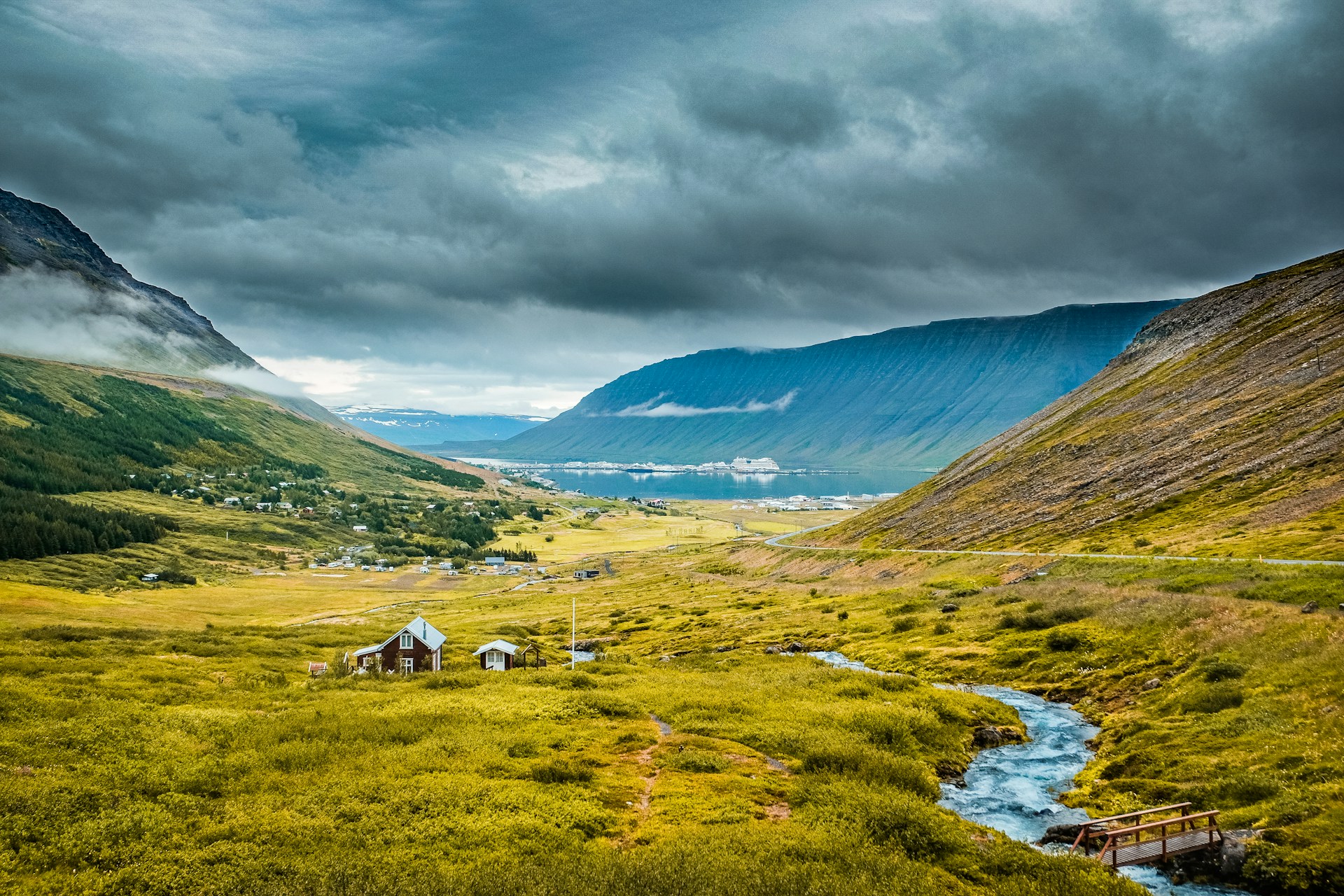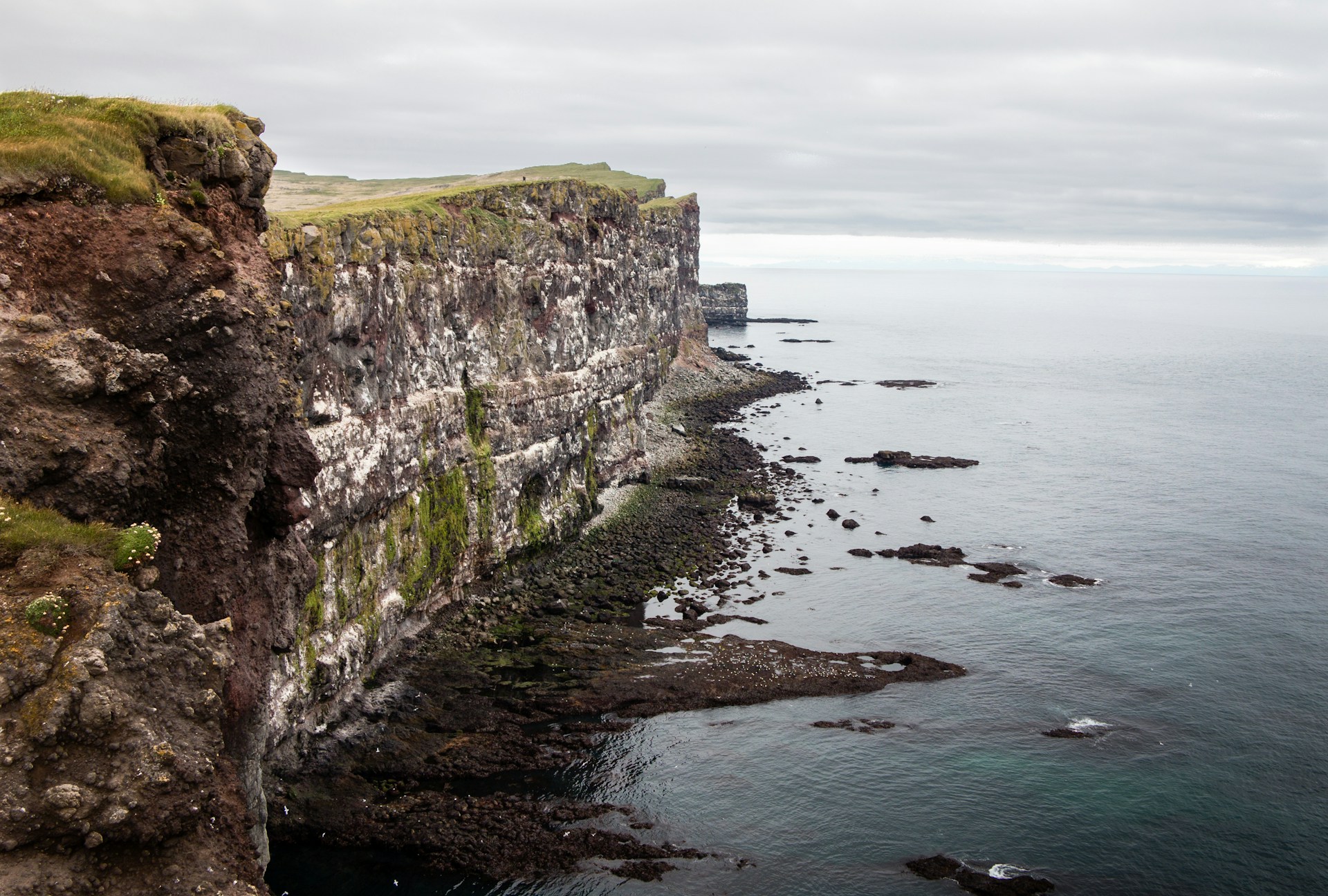10 Best Campsites in Iceland for Aurora Watching
Want to catch the Northern Lights in Iceland? Here are 6 great campsites with wide-open skies and amazing spots for easy, laid-back aurora watching.
The Westfjords of Iceland stand as one of the country's most dramatically beautiful and least visited regions. This remote peninsula, jutting into the Denmark Strait and Greenland Sea, offers an authentic Icelandic experience far from the crowds of the Ring Road.
With towering sea cliffs, pristine fjords, abandoned villages, and some of the most spectacular wildlife viewing in Europe, the Westfjords reward adventurous travelers with unforgettable memories and Instagram-worthy vistas around every corner.
While most tourists flock to Iceland's Golden Circle and South Coast, the Westfjords remain refreshingly untouched. This region represents Iceland at its most raw and authentic, where traditional fishing villages cling to dramatic coastlines and nature reigns supreme. The journey here requires dedication – the roads are winding and sometimes unpaved – but the payoff is immense. You'll experience Iceland as it was meant to be: wild, remote, and absolutely breathtaking.
The Westfjords offer a unique combination of geological wonders, rich cultural heritage, and incredible biodiversity. From June through August, the midnight sun bathes the landscape in golden light for nearly 24 hours, while winter brings the possibility of witnessing the northern lights dancing over snow-capped peaks and frozen fjords.
.jpeg)
Often called the "Jewel of the Westfjords," Dynjandi is a magnificent seven-tiered waterfall system that cascades 100 meters down a mountainside. Unlike Iceland's more famous waterfalls, Dynjandi offers an intimate experience where you can often have this natural wonder almost entirely to yourself. The main fall resembles a bridal veil spreading wider as it descends, creating one of Iceland's most photogenic scenes.
The hike to the main waterfall takes about 15-20 minutes along a well-marked trail that passes six smaller waterfalls, each with its own character and charm. The best photography occurs in the late afternoon when the sun illuminates the falling water, creating rainbow prisms in the mist.
Látrabjarg represents one of Europe's most spectacular seabird colonies and its westernmost point. These dramatic cliffs stretch for 14 kilometers and rise to 441 meters above the pounding Atlantic surf. From May through August, millions of seabirds nest here, including the adorable Atlantic puffins that have become synonymous with Iceland.
The puffins at Látrabjarg are remarkably approachable, often allowing visitors to photograph them from just a few meters away. The best puffin viewing occurs from June through mid-August when these colorful birds are most active. Beyond puffins, you'll spot razorbills, guillemots, and fulmars riding the constant updrafts along the cliff face.
Important Safety Note: The cliff edges are unmarked and can be unstable. Always maintain a safe distance from the edge and be extremely cautious in windy conditions.
Rauðasandur Beach defies expectations of what an Icelandic beach should look like. This 10-kilometer stretch of golden-red sand feels more Caribbean than Nordic, created by crushed scallop shells mixed with volcanic minerals. On sunny days, the contrast between the red sand, turquoise waters, and dramatic mountain backdrop creates an almost surreal landscape.
The beach is perfect for long walks, beachcombing, and photography. During summer, seals often bask on the rocks at the eastern end of the beach. The nearby Sjávarborg restaurant offers excellent local seafood with panoramic beach views, making it an ideal lunch stop.
Hornstrandir represents Iceland's most remote and pristine wilderness area. This uninhabited peninsula, accessible only by boat or on foot, was abandoned by its last residents in the 1950s. Today, it serves as a nature reserve where Arctic foxes roam freely, and pristine hiking trails lead to dramatic cliffs and hidden beaches.
Multi-day hiking opportunities:
The reserve offers some of Iceland's most challenging and rewarding hiking, but requires serious preparation, proper gear, and experience with wilderness travel.

Ísafjörður serves as the Westfjords' largest town and cultural center, home to about 2,600 residents. Despite its small size, the town punches above its weight in terms of cultural offerings, restaurants, and historic charm. The old town features beautifully preserved 18th and 19th-century wooden buildings that house museums, galleries, and cozy cafés.
Don't miss in Ísafjörður:
Just outside Ísafjörður, the fishing village of Bolungarvík offers insight into traditional Westfjords life. The Ósvör Maritime Museum features a reconstructed fishing station from the early 1900s, complete with original boats, gear, and living quarters that bring Iceland's harsh maritime heritage to life.
The museum provides hands-on experiences where visitors can try on traditional fishermen's clothing and learn about the dangerous work that sustained these remote communities for centuries. The nearby Bolafjall mountain offers excellent hiking with panoramic views over the fjord system.
The small village of Flateyri carries a poignant history as the site of a devastating 1995 avalanche that killed 20 residents and destroyed numerous homes. Today, the town has rebuilt with sophisticated avalanche defenses, and visitors can learn about this tragedy and the community's resilience at the local museum.
Despite its tragic past, Flateyri offers stunning fjord views and serves as a gateway to excellent hiking trails. The town's bookstore café provides a cozy retreat and the chance to chat with locals about life in this remote corner of Iceland.
Suðureyri represents the Westfjords at their most authentic. This tiny fishing village of fewer than 200 residents offers visitors a glimpse into traditional Icelandic life largely unchanged by tourism. The village features a small but excellent restaurant, Fisherman, that serves incredibly fresh seafood in a building that was once a fish factory.
The surrounding mountains offer excellent hiking opportunities, and the village's location at the head of Súgandafjörður provides dramatic scenery in all directions. This is an ideal place to experience the genuine warmth of Westfjords' hospitality.

The Westfjords offer some of Iceland's best wildlife viewing opportunities. Arctic foxes roam freely throughout the region, particularly in Hornstrandir, where they've lost much of their natural fear of humans. These beautiful creatures are most active during summer months and provide incredible photography opportunities.
Seal watching locations:
Whale watching from shore is also possible, particularly from high vantage points along the coast where minke whales, humpback whales, and occasionally orcas can be spotted in the deep fjord waters.
While not as numerous as in other parts of Iceland, the Westfjords feature several excellent geothermal bathing opportunities. The pool complex in Ísafjörður offers a more social experience, while remote hot springs like Pollurinn near Drangsnes provide intimate soaking with dramatic coastal views.
Winter visitors to the Westfjords are rewarded with some of Iceland's best northern lights viewing. The region's remote location means minimal light pollution, while the varied landscape provides endless foreground options for aurora photography.
Many local guides offer specialized northern lights tours that combine aurora hunting with cultural experiences and storytelling.

A minimum of four to five days allows for a meaningful Westfjords experience, though a week or more permits deeper exploration and relaxation. Most visitors base themselves in Ísafjörður and take day trips, but staying in different locations provides varied perspectives on this diverse region.
Sample 5-day itinerary:
The Westfjords represent Iceland at its most dramatic and authentic. This region rewards patient travelers with experiences that remain etched in memory long after returning home. From the thundering cascade of Dynjandi to the approachable puffins of Látrabjarg, from the red sands of Rauðasandur to the pristine wilderness of Hornstrandir, the Westfjords offer a profound connection with Iceland's natural heritage.
While the journey requires time and careful planning, few places on Earth offer such unspoiled beauty and authentic cultural experiences. The Westfjords don't just showcase Iceland's dramatic landscape – they embody the spirit of this remarkable island nation. For travelers seeking to escape crowds and discover hidden gems, the Westfjords deliver an adventure that exceeds all expectations.
You need minimum 4-5 days to see the main Westfjords attractions like Dynjandi waterfall, Látrabjarg puffin cliffs, and Ísafjörður town. For a comprehensive Westfjords road trip including Hornstrandir Nature Reserve and multiple hidden gems, plan 7-10 days.
The best time to visit Westfjords Iceland is June through August for accessible roads, midnight sun, and puffin watching at Látrabjarg. May and September offer fewer crowds but some road closures. Winter (October-April) provides northern lights viewing but challenging driving conditions.
A 4WD rental car is highly recommended for Westfjords Iceland, especially outside summer months. While main roads to Ísafjörður and Látrabjarg are accessible with 2WD in summer, gravel roads, steep mountain passes, and unpredictable weather make 4WD the safer choice.
The top hidden gems in Westfjords Iceland include Dynjandi waterfall (7-tiered cascade), Rauðasandur red sand beach, Hornstrandir Nature Reserve wilderness, Látrabjarg puffin cliffs, and authentic fishing villages like Suðureyri and Flateyri away from tourist crowds.
You can reach Westfjords Iceland from Reykjavik by rental car (5-6 hours drive to Ísafjörður), domestic flight with Eagle Air to Ísafjörður airport, or combination of car and ferry from Stykkishólmur to Brjánslækur. Rental car provides best flexibility for exploring.